Some flowers don’t faint in the heat—they flourish. While others droop, crisp, and call it quits mid-July, these power bloomers keep the show going. Petal-perfect, sun-soaked, and totally unapologetic. They don’t just survive heatwaves. They light them up. Think bold colors. Relentless blooms. Plants with grit and glam. They’re not waiting for cooler weather—they’re thriving in the sizzle. If your garden starts feeling like a stovetop, don’t give up. Grow what loves the heat. Feed them. Water them right. Give them a little care—and they’ll give you bloom after bloom, even in the worst of it. Let’s talk about 14 flowers that laugh at triple digits—and what you can do to keep them blooming like it’s spring.
Lantana
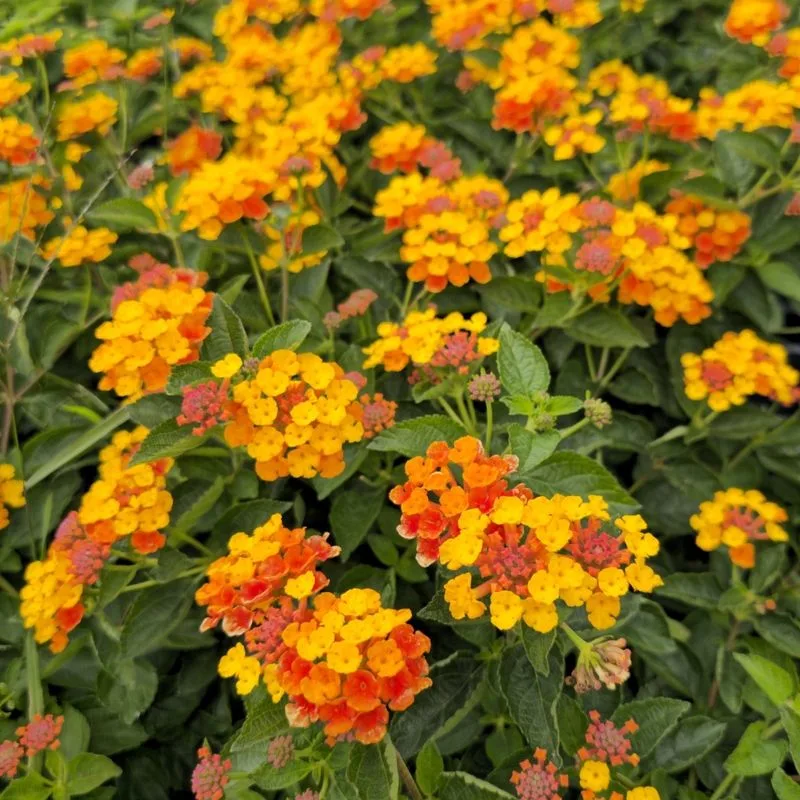
Lantanas are the kaleidoscopes of the flower world, offering a dazzling array of colors. Their vibrant clusters attract butterflies, making them a lively addition to any garden. Lantanas thrive in the sun, their drought-resistant nature allowing them to flourish even in intense heat. To help them survive, plant them in well-draining soil and water sparingly. Fun fact: Lantanas release a citrusy aroma when their leaves are crushed. Despite their beauty, they can be invasive, so keep an eye on their growth.
Zinnia

Zinnias, with their bold, cheerful blooms, are sun lovers. They burst into color, painting gardens with their fiery reds, pinks, and yellows. Their ability to bloom continuously in hot weather makes them a garden favorite. Zinnias prefer well-drained soil and regular deadheading to prolong blooming. Did you know? Zinnias are symbols of endurance. Their sturdy stems and bright flowers have long been associated with lasting friendship and thoughts of absent friends.
Marigold

Marigolds are like pockets of sunshine in any garden. Known for their golden blossoms, they thrive in the heat of summer. Plant them in full sun to enjoy their vibrant display. These flowers are easy to grow and require minimal care. Water them moderately and remove spent blooms to encourage further flowering. Marigolds are also known for their ability to repel pests, making them a valuable addition to vegetable gardens.
Coneflower
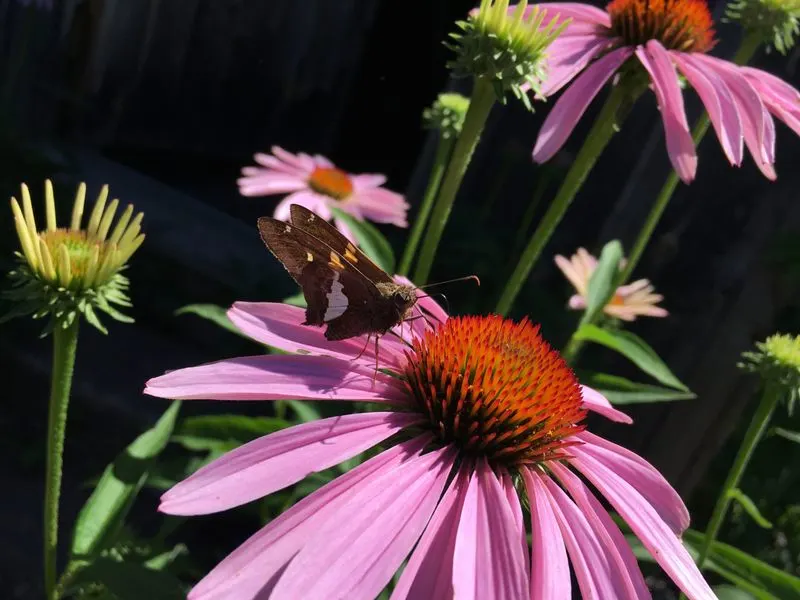
Coneflowers stand tall and proud, their blooms resembling elegant hats. They are resilient to heat and drought, making them perfect for sunny gardens. These flowers are not only beautiful but beneficial, attracting pollinators such as bees and butterflies. For thriving coneflowers, ensure they are in a well-draining spot and water during prolonged dry spells. An interesting tidbit: Indigenous peoples have long used coneflowers for medicinal purposes, particularly in teas and tinctures.
Lavender
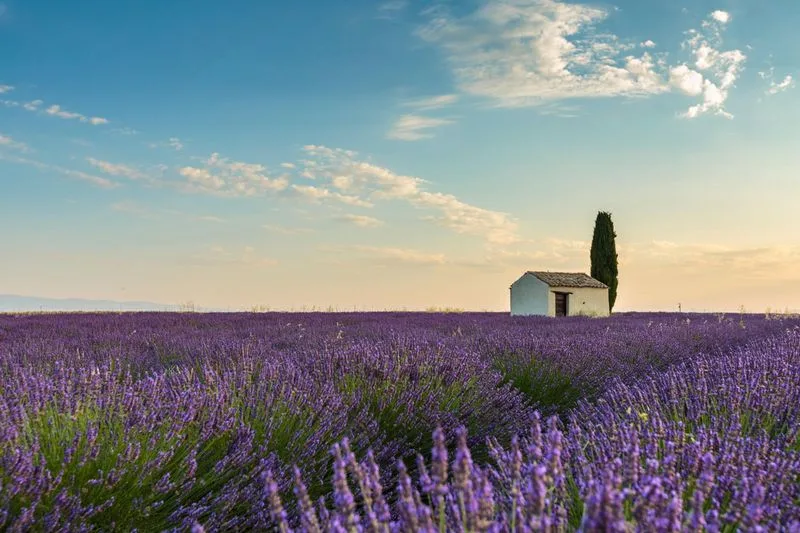
Lavender, with its soothing fragrance and enchanting purple spikes, is a heat-loving plant. It’s a versatile addition to gardens, thriving in dry soil and full sun. Lavender’s calming scent is well-known for its relaxing properties. To keep lavender healthy, prune it regularly and ensure good air circulation around the plants. An ancient favorite, lavender has been used for centuries in perfumes and sachets. Its resilience and beauty make it a timeless garden choice.
Sunflower
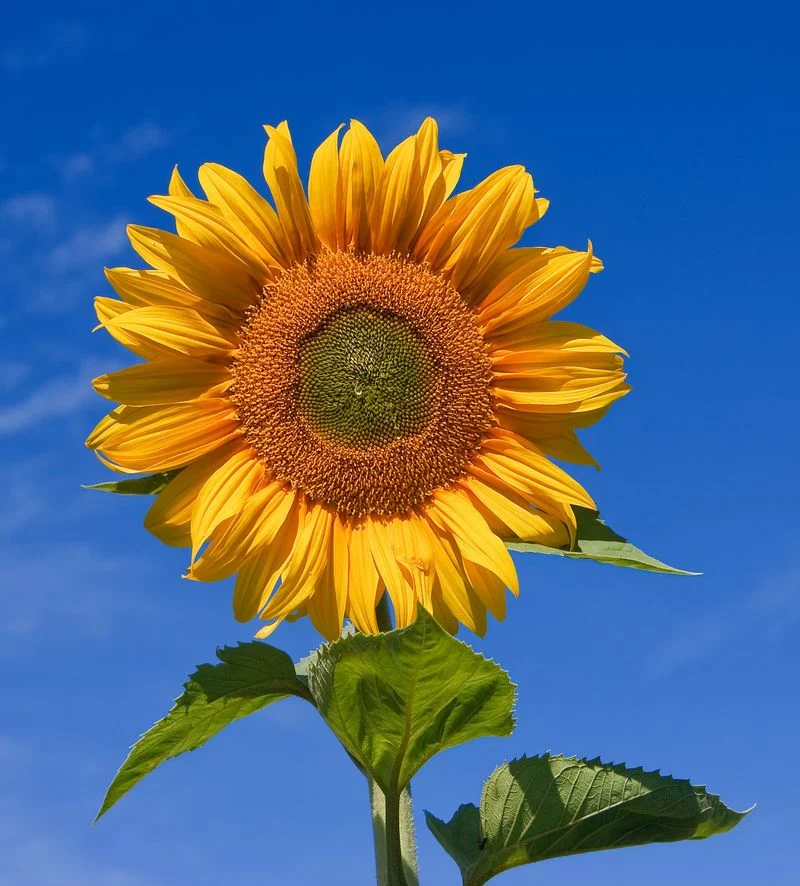
Sunflowers embody the essence of summer with their towering heights and sunny faces. They adore the warmth and are known for their robust nature. These giants can tolerate dry conditions but prefer consistent watering for optimal growth. To support their height, plant them in a spot sheltered from strong winds. Sunflowers are not just a feast for the eyes; they also provide seeds that birds and humans alike enjoy. This makes them both practical and decorative.
Bougainvillea

Bougainvillea is a burst of color that transforms any landscape. Known for their vibrant bracts, these climbers flourish under the sun. Bougainvilleas are drought-tolerant, requiring little water once established. Plant them in well-drained soil and prune regularly to encourage more blooms. Interesting fact: the true flowers of bougainvillea are small and white, while the colorful parts are modified leaves! This hardy plant not only survives heatwaves but thrives in them, adding splashes of color to walls and fences.
Portulaca
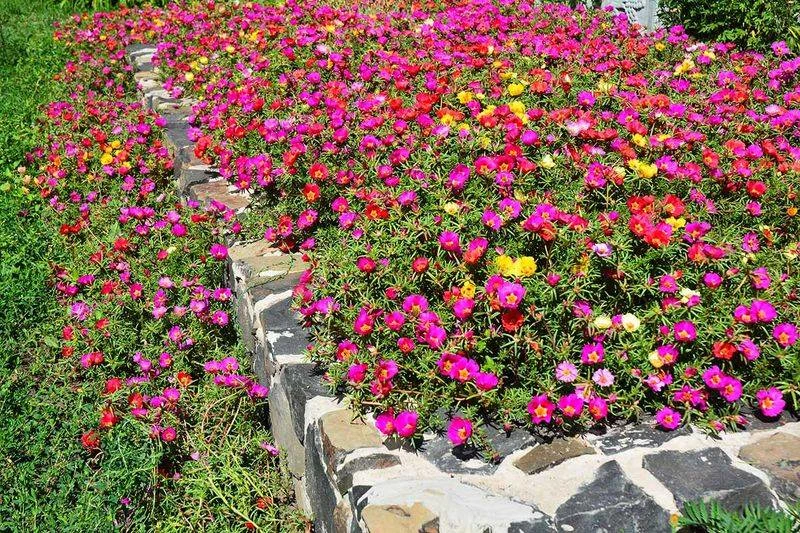
Portulacas, also known as moss roses, are sun worshippers. These low-growing succulents spread across the ground, creating a carpet of vivid blooms. They’re perfect for hot, dry areas and require little maintenance. Plant them in well-drained soil and watch them thrive as they bask in sunlight. A fascinating fact: portulaca’s flowers close at night and open during the day, responding to the sun’s presence. Their resilience and beauty make them a delightful addition to any sunny spot.
Gazania

Gazania flowers are like painted masterpieces, with striking patterns on their petals. These sun-loving plants are native to South Africa and thrive in hot, dry conditions. Gazanias are drought-tolerant and need well-drained soil to flourish. Their brilliant hues attract pollinators, adding life to the garden. Gazanias close their flowers at night and reopen with the sun, a trait that makes them unique. These hearty plants are perfect for adding bursts of color without needing extensive care.
Coreopsis
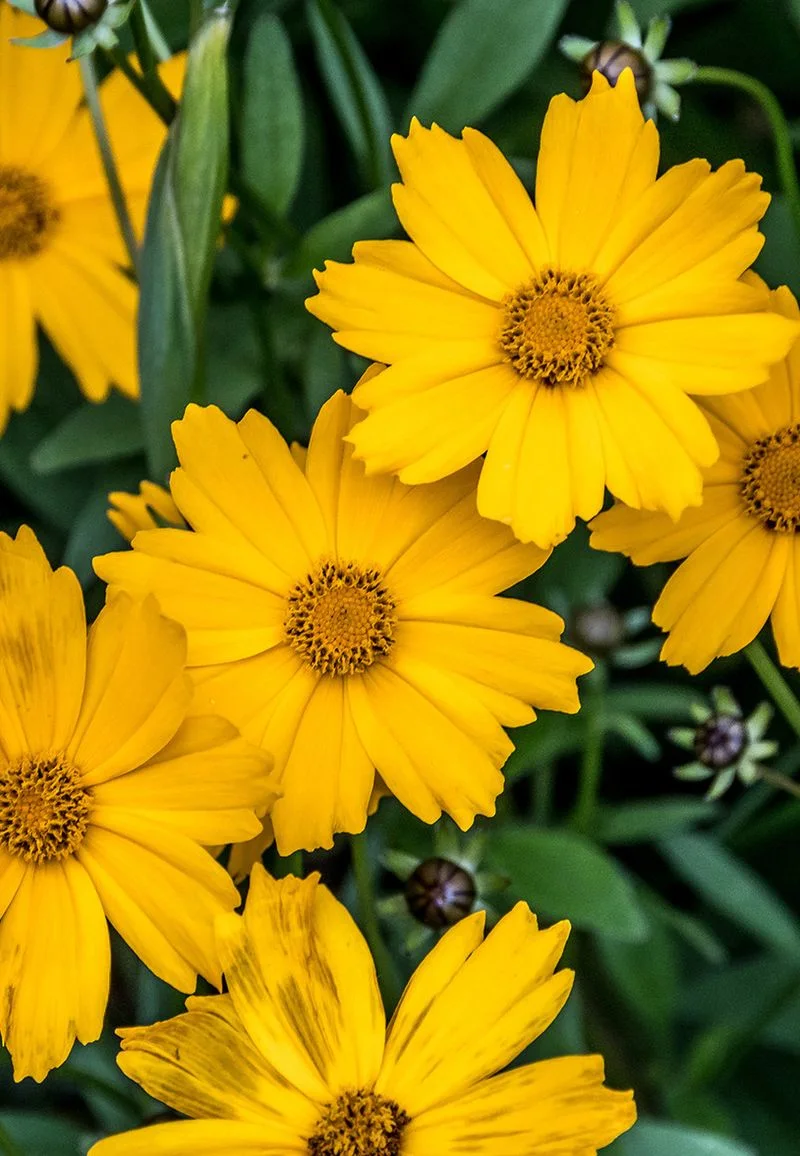
Coreopsis, often called tickseed, brings a cheerful glow with its sunny blooms. These flowers thrive in hot, dry conditions and require little water. Plant them in well-drained soil and enjoy their long-lasting flowering season. Coreopsis are excellent for attracting butterflies and bees, contributing to a lively garden. A fun detail: some varieties of coreopsis have flower petals that appear fringed, adding an extra layer of texture to gardens. Their resilience and charm make them a gardener’s favorite.
Salvia
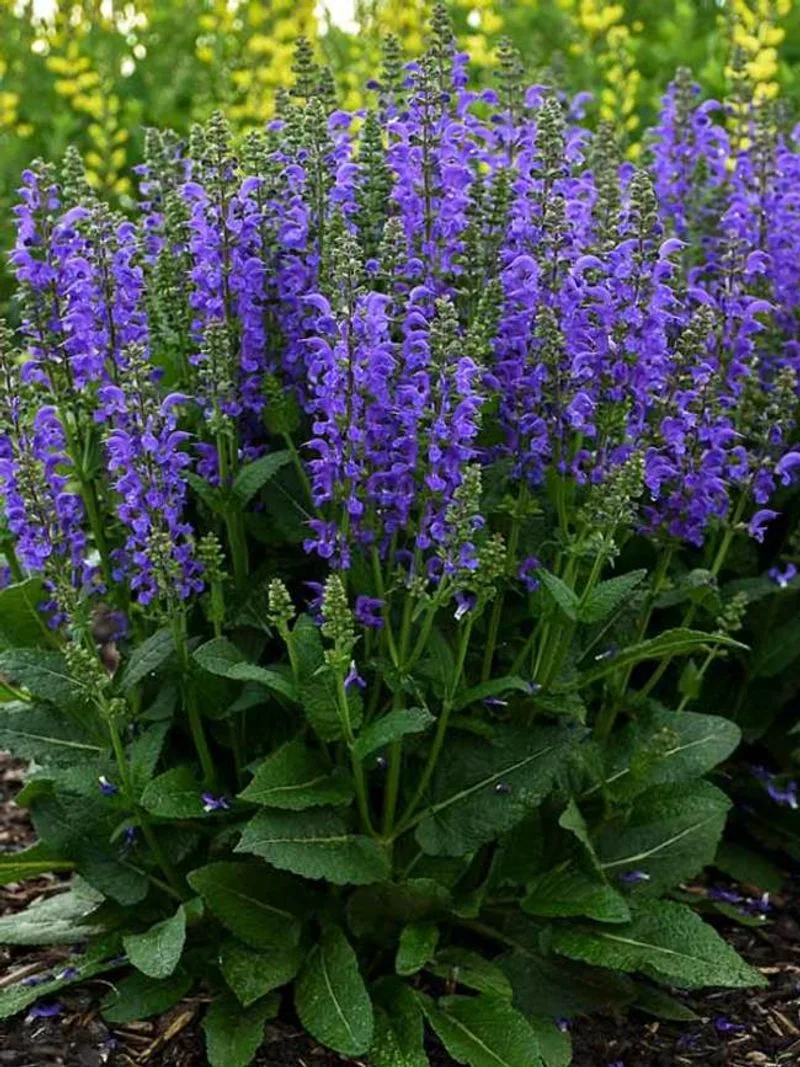
Salvias are known for their towering spikes and vibrant colors. They thrive in the heat and are highly drought-tolerant. Salvias prefer well-drained soil and full sun, making them ideal for dry climates. These plants are a haven for hummingbirds and butterflies, adding movement and life to gardens. An interesting fact: the name ‘salvia’ comes from the Latin word ‘salvare,’ meaning ‘to heal,’ reflecting its historical medicinal uses. Salvias are both beautiful and beneficial, offering color and life to any garden space.
Canna Lily

Canna lilies are tropical beauties that bring a touch of the exotic to gardens. Their large, bold flowers love the sun and heat, making them perfect for summer displays. Cannas require rich, well-drained soil and regular watering to maintain their lush appearance. They are often used as focal points in garden beds, thanks to their dramatic foliage and vibrant blooms. Did you know? Cannas are also known for their edible rhizomes, which can be a food source in some cultures.
Verbena
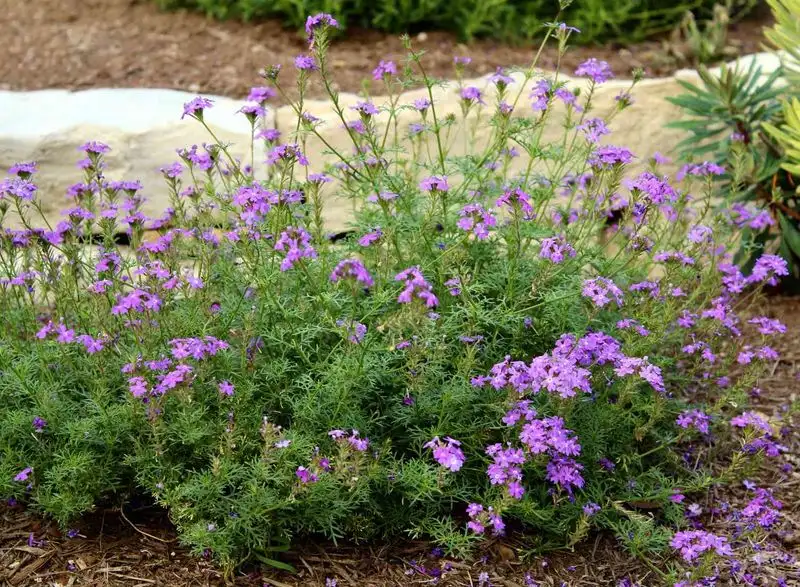
Verbenas are garden workhorses, thriving in heat and sun with ease. Their small, colorful blooms cluster together, creating a floral tapestry. Verbenas need well-drained soil and minimal water, which makes them drought-tolerant. They benefit from regular deadheading to sustain flowering. Verbenas are excellent for attracting pollinators like bees and butterflies. A quirky detail: verbena is historically known as a magical plant, believed to ward off evil and bring good luck. This makes them not only beautiful but storied additions to gardens.
Oleander
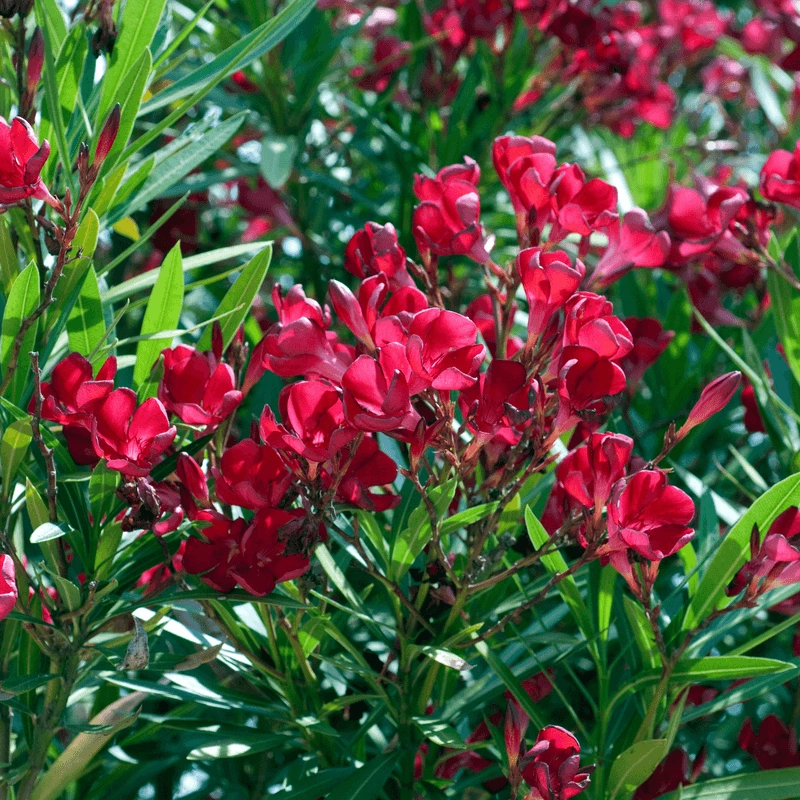
Oleanders are robust shrubs known for their abundant blooms and evergreen leaves. They are exceptionally heat-tolerant and thrive in sunny locales. These plants prefer well-drained soil and can withstand periods of drought once established. Oleanders are often used as hedges or garden backdrops due to their dense foliage and prolific flowering. Despite their beauty, oleanders are toxic if ingested, so care should be taken when planting them in areas accessible to children and pets.

